1. Modern methods of spinal neurosurgery |
2. Advantages of spinal neurosurgery abroad |
3. Where to go for spine treatment abroad? |
Correct and stable work of the whole body depends on the state of the spine. Seated work, lower physical activity, uneven or excessive load on the spine, injuries, genetic predisposition and other factors lead to the development of diseases of the spine. In some cases, when conservative therapy is not effective, doctors resort to spinal neurosurgery.
In this article, we will cover innovations in spinal surgery and the best clinics in the world for spine treatment.
Over 85% of people in the world have some kind of back problem. According to a study by the Upledger Institute in the USA, out of 100 people with spinal diseases, more than 30 need surgery. More recently, spinal surgery was considered so dangerous it was resorted to only in the most desperate cases. Today, highly effective and safe spinal neurosurgery methods are available. In this article, we will talk about such innovations and the best clinics for the treatment of the spine.
ADVANCED METHODS OF SPINAL NEUROSURGERY
Modern clinics use the following methods in the surgical treatment of the spine:
Fixation of the vertebrae (spinal fusion)
The method is used for the treatment of vertebral dislocation and spinal fractures. In most cases, the surgery is performed through a small incision using endoscopic instruments, which is less traumatic for the patient. This reduces the blood loss and risk of infection, and the person experiences less pain.
During the surgery, the surgeon fuses the vertebrae to limit the mobility of the affected area. In doing so, the patient’s motor function is not compromised. To fix the fractures, titanium rods and bolts are used to hold the spine in place for many years. Surgeons also use an innovative method of stabilisation called Spinal Fusion. Through a small incision in the back or neck, the surgeon fuses the damaged vertebrae with metal bolts. Bone implants are also used if necessary. Usually after the fixation procedures, the patient can return to normal life in just a few weeks.
In 80% of cases, spondylodesis is performed on only 1-2 vertebrae, which allows patients to return to a normal lifestyle and even engage in active sports without any restrictions.
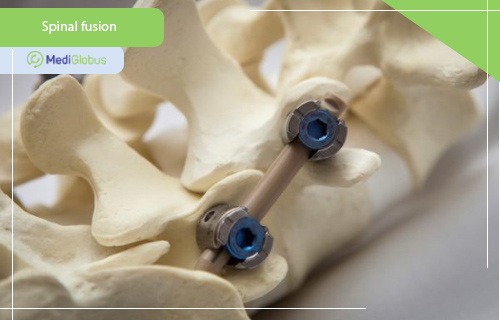
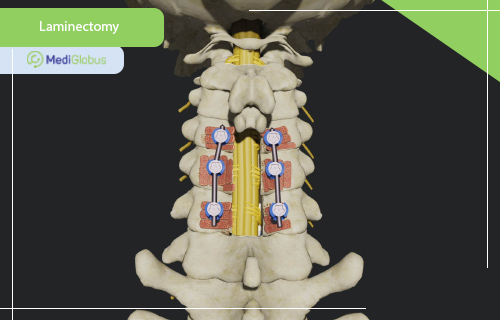
Laminectomy
This operation is often prescribed for spinal stenosis (narrowing of the spinal canal, accompanied by pain, numbness, impaired motor function) and for intervertebral hernia. During the surgery, parts of bones and bone spurs compressing the nerve endings are removed.
In 85-90% of cases, a laminectomy can significantly reduce daily back pain. The effects of treatment can last 10 years or more.
It is important to remember that laminectomy does not treat the original cause of the disease, which is usually osteoarthritis. To prevent symptoms from returning, it is important to follow your doctor’s recommendations, moderate activity levels, and undergo conservative treatment.
According to a study published in Surgical Neurology International, in 95,2% of cases, spinal laminectomy goes without complications.
Foraminotomy
Like laminectomy, it helps in cases of compressed nerve endings of the spine. During the surgery, parts of the bones are removed along the sides of the affected vertebra, thereby making room for nerve roots.
The success rate of open foraminotomy is 72-83%, and 94,9% for minimally invasive foraminotomy.
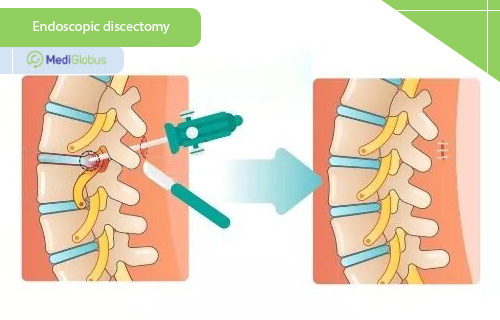
Discectomy
Discectomy is used for treatment of intervertebral hernia. During the surgery, the disk is removed partially or completely. Previously, during discectomy, it was necessary to make a large incision to access the operated area. Now surgeons resort to a more gentle method – microdiscectomy. During this intervention, the surgeon uses a special microscope and micro tools, eliminating the need for large incisions.
During a microdiscectomy, a 1-2 centimetre longitudinal incision is made directly above the herniated disc. Through this incision, the neurosurgeon inserts special retractors and an operating microscope that allows him/her to visualise the spinal region with minimal or no incision of the adjacent muscles and soft tissues. Once the retractor is in place, an X-ray is used to confirm that the appropriate disc has been identified. Small instruments resembling dental instruments are used to remove it. The entire procedure lasts about one hour.
Disc Replacement
After removal of the intervertebral disc, an artificial implant is placed in its place. Such surgery does not limit the mobility of the vertebrae.
Disk replacement is usually performed through an incision in the abdomen. The doctor accesses the spine, removes the disc affected by the disease, and places an artificial disc in its place.
Data published by the FDA has shown that spinal disc placement reduces the likelihood of developing disease in the adjacent spinal segment. In addition, compared to spondylosis, disc replacement requires a relatively shorter recovery time and allows patients to return to activity soon after the surgery.
Installing an interlaminar implant
During the surgery, a special device is inserted between the two vertebrae to stabilise them and relieve pressure on the nerve endings. This procedure does not affect spinal mobility.
During the procedure, the surgeon places one or more titanium interlaminar implants between the bones and/or tissues of the spine. They “prop up” the bony structures, keeping them in a bent position, as if the person were leaning forward or sitting. Position changes occur only in the area of stenosis, limiting the extension of the spine and maintaining a neutral or slightly flexed position.
Approximately 93% of patients remain satisfied with the interlaminar implant placement.

Kyphoplasty (vertebroplasty)
An effective minimally invasive procedure that helps strengthen the spine by inserting a balloon into the damaged area through a thin needle and filling the space with orthopaedic cement. It is used to treat osteoporosis and vertebral compression.
Up to 75% of patients can regain mobility and get rid of pain with vertebroplasty.
Nucleoplasty
An effective non-invasive method for the treatment of intervertebral hernia. The surgery is performed through a 2-3 mm puncture under the control of an x-ray imaging machine. A special tool is introduced into the core of the intervertebral disk, which gives impulses of cold plasma or with the help of an electromagnetic field acts on the disk. As a result, the pulposus nucleus of the disk evaporates, the pressure on the nerve root decreases and the pain decreases rapidly.
Surgical treatment of scoliosis
One of the most effective ways to fix and correct the curvature of the spine in modern spinal surgery is the three-dimensional correction system CDI, or the Cortel-Dübuse method. The position of the spine is adjusted using a special stabilising system, which consists of brackets, rods and hooks of nickelide and titanium, does not require spinal fusion and the use of a supporting plaster corset.
ADVANTAGES OF SPINAL NEUROSURGERY ABROAD
The sparing methods in the treatment of injuries and diseases of the spine ensure safety and quick recovery.
Modern equipment used in diagnostics and treatment significantly improves the outcome for the patient.
The modern and safe materials used during spine treatment can last for more than 20 years.
Experienced foreign specialists have vast knowledge of mini-invasive spinal surgery and the use of innovative methods of spinal surgery.
The doctors prefer using minimally invasive treatments under the supervision of imaging, reducing the risk of postoperative complications.
Quality patient care and service.
SPINAL SURGERY IN LEADING FOREIGN CLINICS
Particularly successful in the study and implementation of innovative methods in spinal surgery are the countries of Europe, Israel and Turkey, where intervertebral hernia, spinal tumours, vertebral body fractures, scoliosis and other pathologies are treated with high efficiency.
Doctors work not only to eliminate the problem surgically in the treatment of back problems, but also preserve the spine and all its functions. In developed countries, surgeons prefer to perform spinal surgery using minimally invasive techniques and microsurgery, such as endoscopy or laser surgery.
Among the leading specialists in the field of spinal surgery to whom patients from all corners of the world turn are: Dr Bartolomé Oliver (more than 40 years of experience, head of neurosurgery at the Teknon Clinic in Spain), Professor Michal Tichý (head of neurosurgery at the Motol Clinic in the Czech Republic, more than 36 years of experience), Professor Erden Ertürer (leading orthopaedic surgeon at the Liv Clinic in Turkey, more than 28 years of experience).
In advanced medical centres, there are departments of neurosurgery and spinal surgery, which possess everything necessary for surgeries of various complexities.
The surgeons at the University Hospital of Cologne in Germany are able to perform complex spinal surgeries using navigation equipment and microscopes, which few clinics in the world are equipped with. Modern dynamic fixators are used here to stabilise the spine, which do not interfere with motor functions.
The newest method is widely used in Germany – chemonucleolysis, which helps patients with displacement or prolapse of the vertebral discs and with severe spinal injuries. During the procedure, the damaged disk is dissolved by a special substance that is inserted through the catheter. A new disc is formed using acrylic cement and a fast-hardening solution.
It should be also noted that Ichilov, Sheba in Israel and Koç in Turkey have surgeons who successfully perform operations to remove tumours and hernias of the spine, treat degenerative disorders and other diseases. Typically, during surgical treatment of scoliosis with outdated methods, the surgery may take more than 6 hours, and for the correction of the spine up to 20 screws can be used, which leads to the emergence of severe pain and limited mobility. In Israel, one can have painless and quick treatment of scoliosis with the help of a minimally invasive ApiFix system. To correct the curvature of the spine, only two screws are required; after the surgery, the mobility of the spine is preserved. The treatment requires only a couple of months. During this time, there is a gradual alignment of the spine and the restoration of ligaments and muscles.
In the Motol University Hospital Czech Republic, laser technologies and endoscopy are actively used to treat the spine, which significantly reduces the risk of complications during and after surgery and shortens the recovery period of the patient. All types of back surgery are performed here – from simple prolapse operations that can be solved by dynamic stabilisation, right up to fusions. In addition, the clinical surgeons use neuronavigation, which greatly improves the quality and efficiency of operations on the spine.
A major role in the treatment of spine pathologies is played by the use of visualisation equipment during surgery – CT, MRI, etc. For example, during spinal surgeries at the Medical Park Clinic in Turkey, along with neuronavigation, surgeons use X-ray imaging, which displays a three-dimensional image of the area being operated on, improves the surgeon’s manipulation accuracy and minimises the risk of trauma. Modern methods of spinal surgery make it possible to cope with problems caused by diseases of the spine with great efficiency and restore patients to the possibility of a normal existence.
Summary
All modern methods of spinal neurosurgery are available in advanced foreign clinics. The most common procedures sought by medical tourists are: spondylodesis, laminectomy, foraminotomy, discectomy, disc replacement, interlaminar implant, vertebroplasty, nucleoplasty, and surgical treatment of scoliosis.
The main advantages of treating spinal diseases abroad: are gentle treatment methods, minimally invasive interventions, long-lasting materials, experienced surgeons, quality care and rehabilitation.
MediGlobus international platform recommends Koç, Medical Park (Turkey), Motol (Czech Republic), Uniclinic Cologne (Germany), Ichilov, and Sheba (Israel) for spinal surgery.
Modern methods of spinal surgery make it possible to cope with problems caused by spinal diseases with great efficiency and restore the possibility of normal existence to patients.
Sources:
- 1. Upleger Institute
- 2. Interventional Spine – Surgical Management of Isthmic, Dysplastic and Degenerative Spondylolisthesis
- 3. MODALIDAD DE TITULACIÓN PROYECTO DE DESARROLLO
- 4. Surgical Neurology International: Lower complication and reoperation rates for laminectomy rather than MI TLIF/other fusions for degenerative lumbar disease/spondylolisthesis
- 5. Essential Surgical Techniques: Minimally Invasive Cervical Foraminotomy
- 6. American Academy of Orthopaedic Surgeons
- 7. Neurological Clinics of South America: Cervical Total Disc Replacement: Food and Drug Administration-Approved Devices
- 8. International Journal of Spine Surgery: Survivorship of coflex Interlaminar-Interspinous Implant
- 9. Vertebroplasty & Kyphoplasty




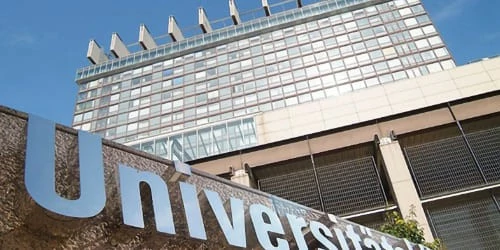
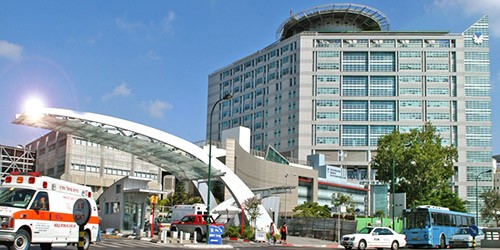
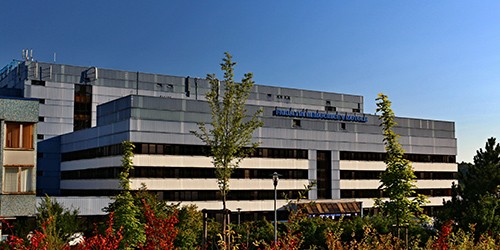
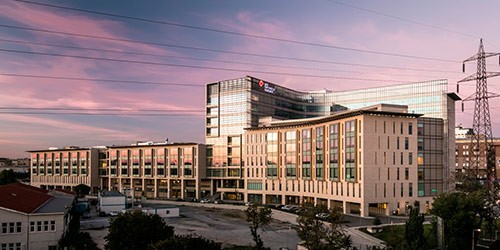


Comments